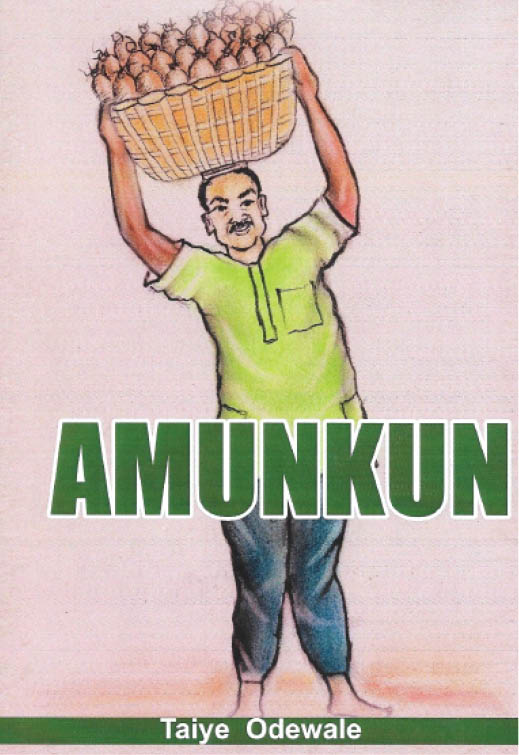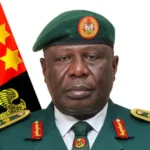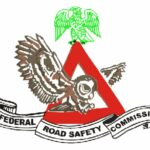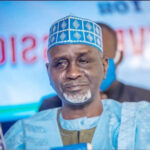Title: Amunkun
Author: Taiye Odewale
Reviewer: Hope Chizoba Nwankwo
‘Amunkun’ is a metaphor for Nigeria’s underdevelopment. In Yoruba, the word means someone who has what is commonly called K-legs or knock knees, from birth. Proverbially the challenge is well captured by the Yoruba with the popular saying ‘Amunkun o, eru re wo’ meaning , knock-kneed fellow your load is tilted or dangerously bent, with the popular response as well “Oke lenwo , ewo isale”, meaning, you are only viewing me from the top without looking down where the problem emanated from.
Gboyinde in Taiye Odewale’s ‘Amunkun’ is the fictional main character who, rather than allow a natural deficiency make life miserable for him, makes the best out of this situation to become a symbol of success in his community and beyond. From childhood, he was an object of ridicule in his community, but because of his determination to succeed in life, driven by self-confidence, hard work, perseverance, and absolute faith in Olodumare (The Almighty God), he ends up becoming a celebrity and a role model for those who wants to attain success.
The book tells the grass to grace story of Gboyinde, showing his transformative years, which can be compared to that of Nigeria from inception, but now an Amunkun going by the systemic dysfunctions afflicting it.
These systemic dysfunctions have to do with the jettisoning of bottom to top model of development, according to the author, bequeathed to Nigeria at independence decades ago, to top to bottom model.
However, being a self-inflicted one, concerned citizens, the author posits, believe that their beloved land can deal with the structural deficiency imposing the imagery of an Amunkun on it and incapacitating it from moving fast like others in her journey of nationhood and genuine development.
To them, if Gboyinde who is naturally an Amunkun from birth could overcome his deficiency and achieve targeted goals in life to the point of being envied by able-bodied men of his time or generation, their beloved country which started her journey of nationhood and development on the right track at the beginning, can by way of addressing its self-inflicted structural abnormality, get back on the right track and become great in all ramifications.
Summarily, the writer uses Chapter Six, captioned ‘Gboyinde as a Metaphor’ , to convey his message by submitting thus: “Expectedly since 1914 when Gboyinde Amunkun who was later known as Gboyinde Oloro {Wealthy Gboyinde} died, his story of grass to Grace has always been passed from one generation to the other in Edidi community and the adjourning towns and villages, as motivational therapy for those with similar challenges.
“Modernity and civilization facilitated by formal education, has however moved the story from the realm of ‘moonlight telling’ by elderly people , to written texts in form of documentations at about 100 years after his demise, for the purposes of inculcating the virtues of hard work , honesty, perseverance, contentment, self-esteem and self-reliance exhibited by Gboyinde, in the present generation .
“Analogically in one of such documentations, the story is likened on a negative template, to systemic dysfunctions incapacitating the potentialities of one of the great countries of the world, which incidentally came into existence as a geographical entity through amalgamation and proclamation to that effect, the very year Gboyinde died.
“Ironically, the entity in question, didn’t at the beginning have anything to do with the problem or imagery of an Amukun, Gboyinde was, to his parents and community at childhood; but that of well-structured and potentially endowed, for greatness and genuine development, among comity of Nations in the world .
“However in metaphorical sense, ‘Amunkun imagery’ set in for the country after many years of distorting its original structural components from bottom to top odel of development, to top to bottom model, with attendant concentration of powers , resources and governance at the top to the detriment of component units.
“Being a highly diversified entity in terms of peoples inhabiting it and large territorial size, is among the 25 others in the world, practicing a structural form of government suitable for such features but in practical terms within the last five decades, running a structure meant for smaller and homogeneous Nations for reasons that have been over taken by realities on ground.
“The realities on ground as opined in the documentation, are the problems of insecurity, corruption and endemic poverty starring the peoples and governments of the ‘over centralized diversified entity ‘ in the face.
“The way out of the systemic dysfunctions for the crippled giant reasoned the analogists, is for it to go back to the basis by addressing her structural defects through required decentralization cum devolution of powers and resources over concentrated at the octopus centre, in giving the needed viability and potency to the already weakened structural components and saving the centre itself , from self-suffocation.
“Doing this by the country in question they reasoned, will no doubt bring about the productivity – driven generational successes recorded by Gboyinde, his four biological children, 36 grandchildren, down to 774 great and great – great grandchildren; as against productivity – killing top to bottom national cake sharing formula being practiced by the naturally endowed entity.
“The analogists reasoned further that it may not be wrong to conclude that if the problem of ‘systemic dysfunctions ‘ frustrating good governance at all levels in the affected country is not addressed, efforts of any government particularly at the centre , in making positive impacts on the lives of the citizenry , would continue to be fruitless, regardless of how well envisioned and intended .
“Proverbially, such efforts according to them, can be likened to ‘yinyin agbado si eyin igba’, meaning, peeling corns on the back of Calabash, which symbolizes fruitlessness of actions.
“The ball they posited, is therefore in the court of those saddled with constitutional responsibility of carrying out the required surgical operations on the structural defects, to do so in making the country finding its bearing cum direction, from the somewhat stranded journey of Nationhood it put itself, few years after take-off.
“This they concluded, can be achieved if present generation of the entity is ready to hold the bull by the horn, by putting it on the right track structurally as a Federation in letter, spirit and practice; comparable to the functional and developed ones of the world”.

 Join Daily Trust WhatsApp Community For Quick Access To News and Happenings Around You.
Join Daily Trust WhatsApp Community For Quick Access To News and Happenings Around You.


